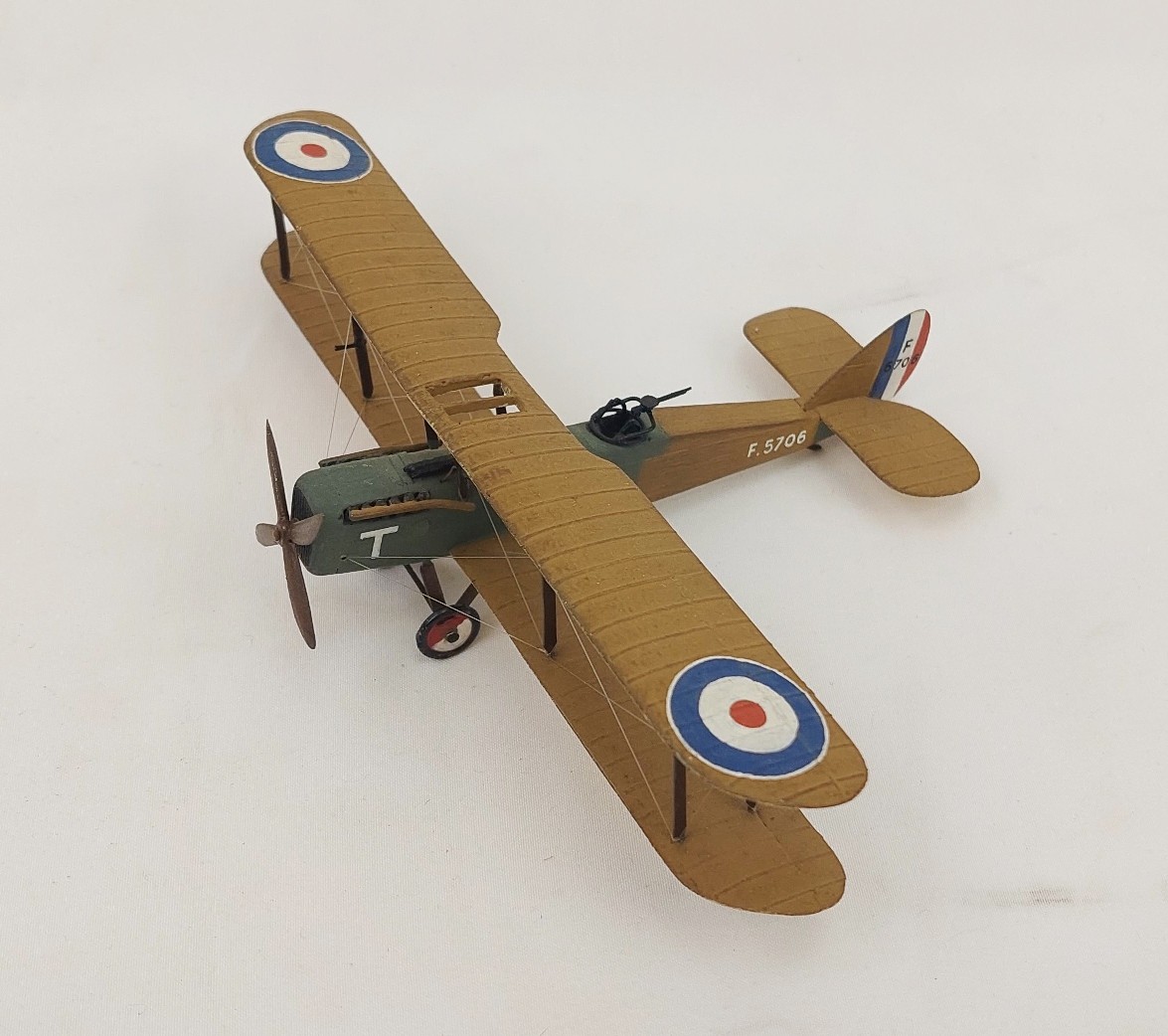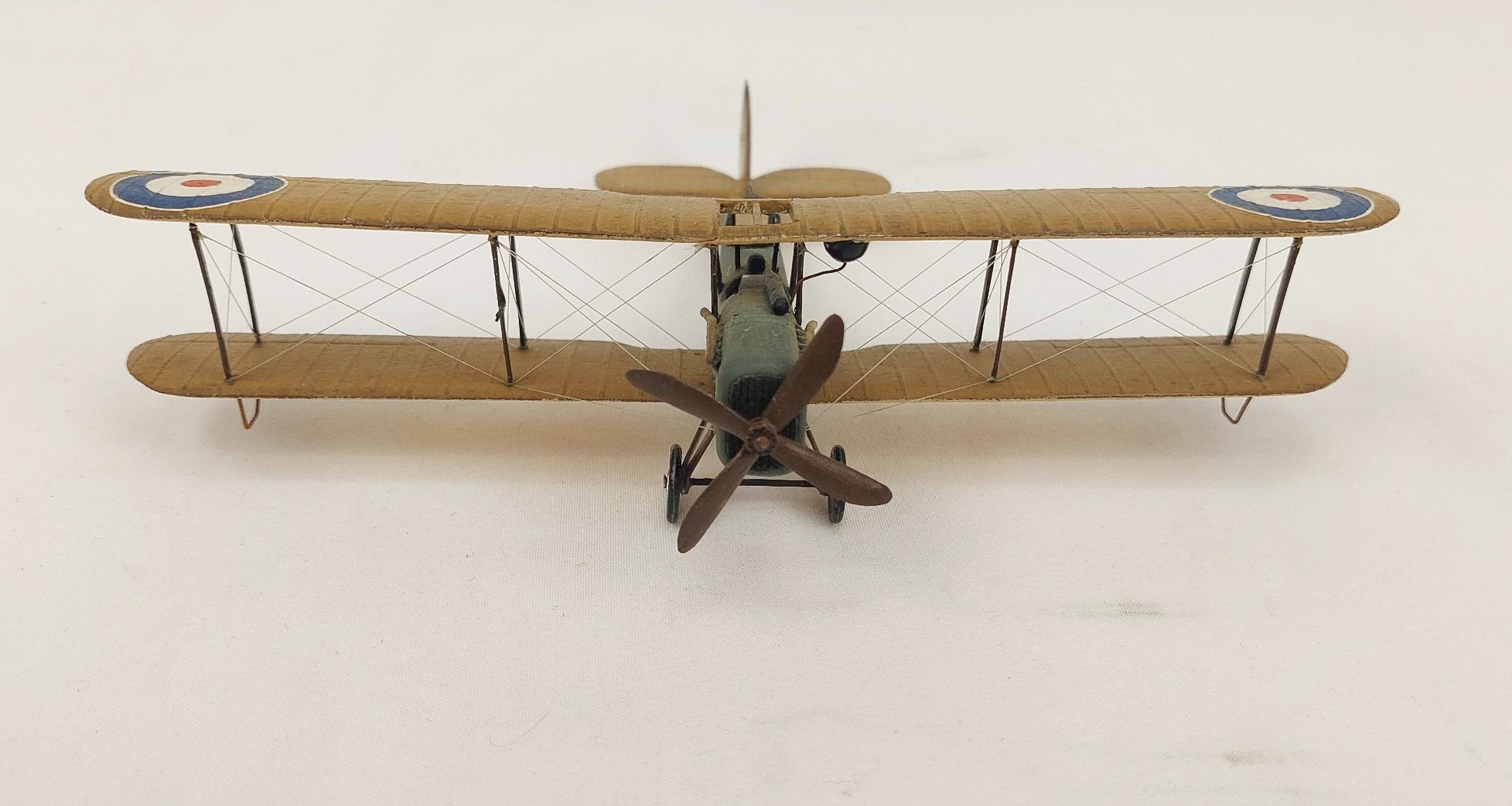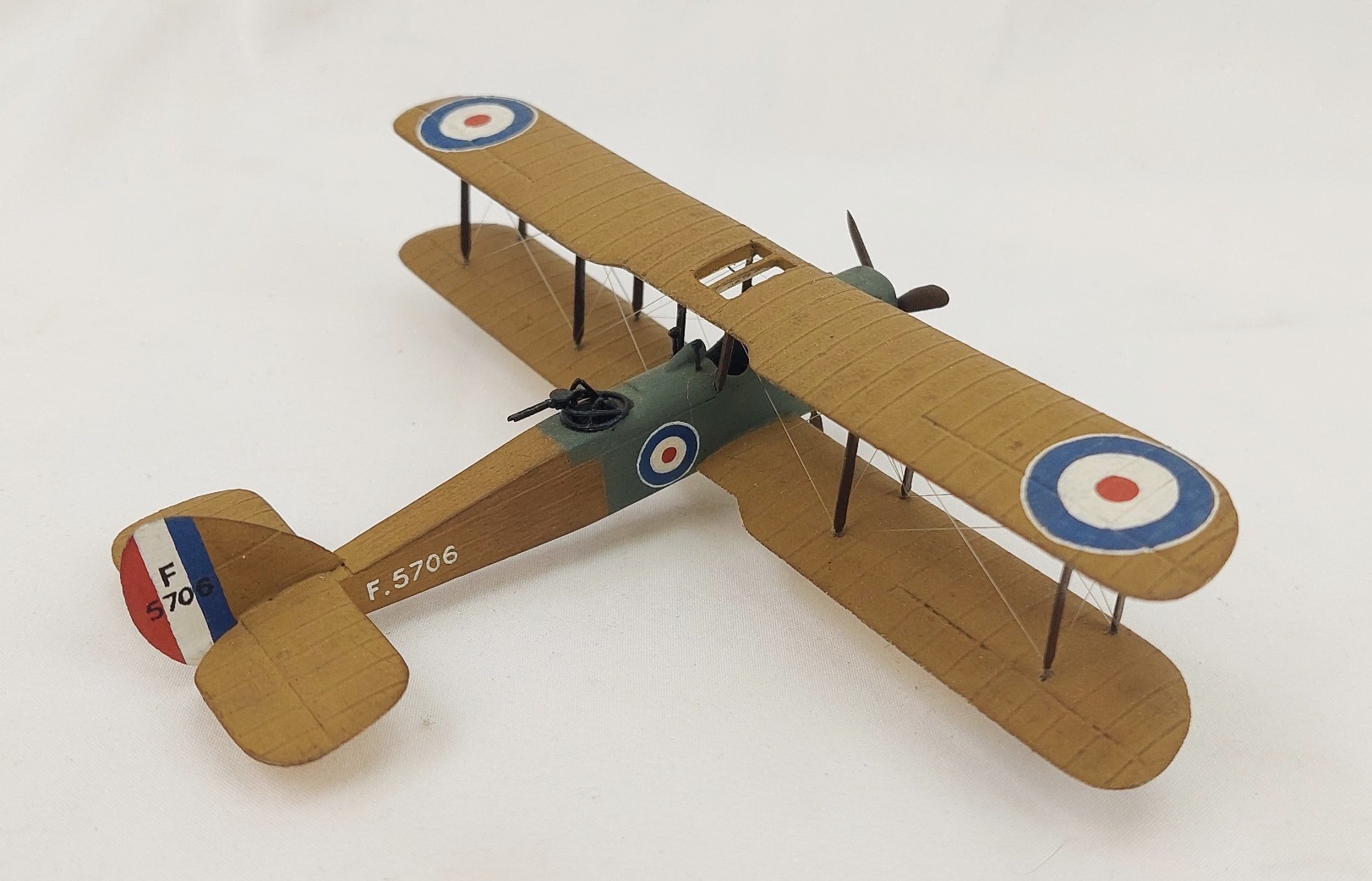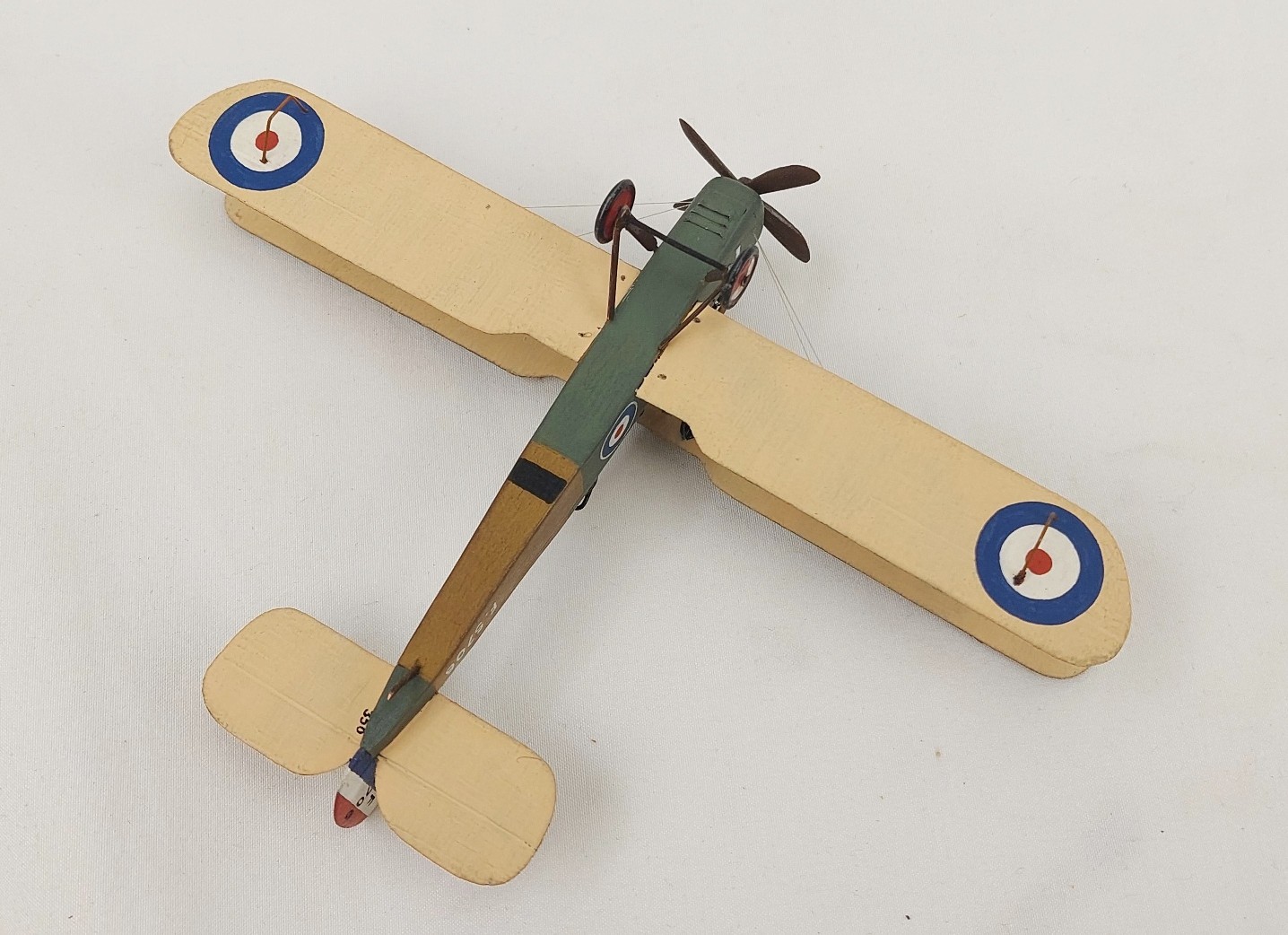~ 1930s Skybirds WW1 De Havilland DH4 Fighter ~
The de Havilland DH.4 was a British World War I-era biplane bomber and reconnaissance aircraft. It was one of the most important and successful aircraft of the war and played a crucial role in the conflict. Here are some key details about the de Havilland DH.4:
Design and Development:
The DH.4 was designed by Geoffrey de Havilland, the founder of the de Havilland Aircraft Company. It was originally developed as a successor to the earlier de Havilland DH.2 and DH.3 aircraft. The DH.4 featured a traditional biplane design with a wooden airframe covered in fabric.
Role and Variants:
The DH.4 was primarily used as a two-seat day bomber and reconnaissance aircraft. It was known for its versatility and adaptability, and several variants were produced to fulfill different roles. These roles included day bombing, night bombing, and reconnaissance.
Engine and Performance:
One of the key features of the DH.4 was its powerful and reliable engine. It was typically powered by a 400-horsepower American Liberty L-12 engine. This engine provided the DH.4 with good speed and altitude capabilities, making it a more formidable aircraft compared to many of its contemporaries.
Armament:
The DH.4 was armed with a forward-firing .303-inch Vickers machine gun for the pilot and a flexible .303-inch Lewis machine gun for the observer/gunner. It was also equipped to carry bombs for its bombing missions.
Service in World War I:
The DH.4 entered service with the Royal Flying Corps (RFC) and the Royal Naval Air Service (RNAS) in 1916 and was widely used on the Western Front. It was known for its effectiveness in attacking German targets and its reliability. The DH.4 conducted reconnaissance missions and day and night bombing raids, contributing significantly to the overall war effort.
Post-World War I Service:
After World War I, the DH.4 continued to serve in various roles, including as a mail plane and civilian transport aircraft. It was widely used in the United States for mail delivery and early commercial aviation.
Legacy:
The DH.4 is considered one of the most successful aircraft of World War I. Its reliability, performance, and adaptability made it a key asset for the Allies during the conflict. The design of the DH.4, along with the Liberty engine, had a lasting influence on subsequent aircraft development.
The de Havilland DH.4 is remembered as a significant aircraft in the history of aviation, not only for its service during World War I but also for its post-war contributions to civil aviation.
~ Condition ~
Please refer to the images for the condition. The piece is in good order.
~ Dimensions ~
The aeroplane has a wingspan of 18 cm (7 inches) tall.
JA_7719135119





